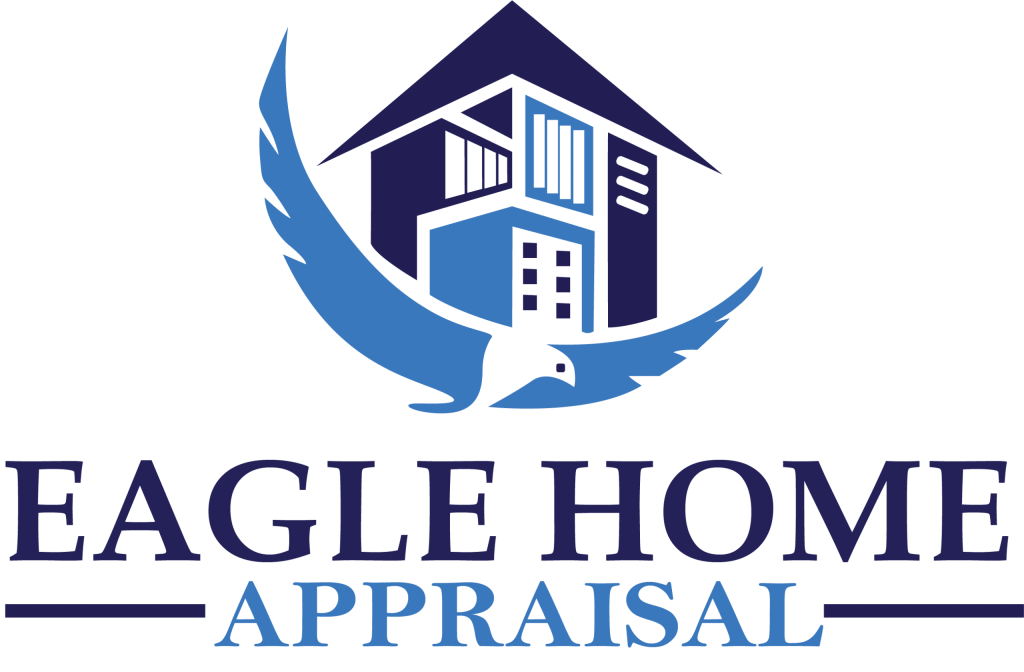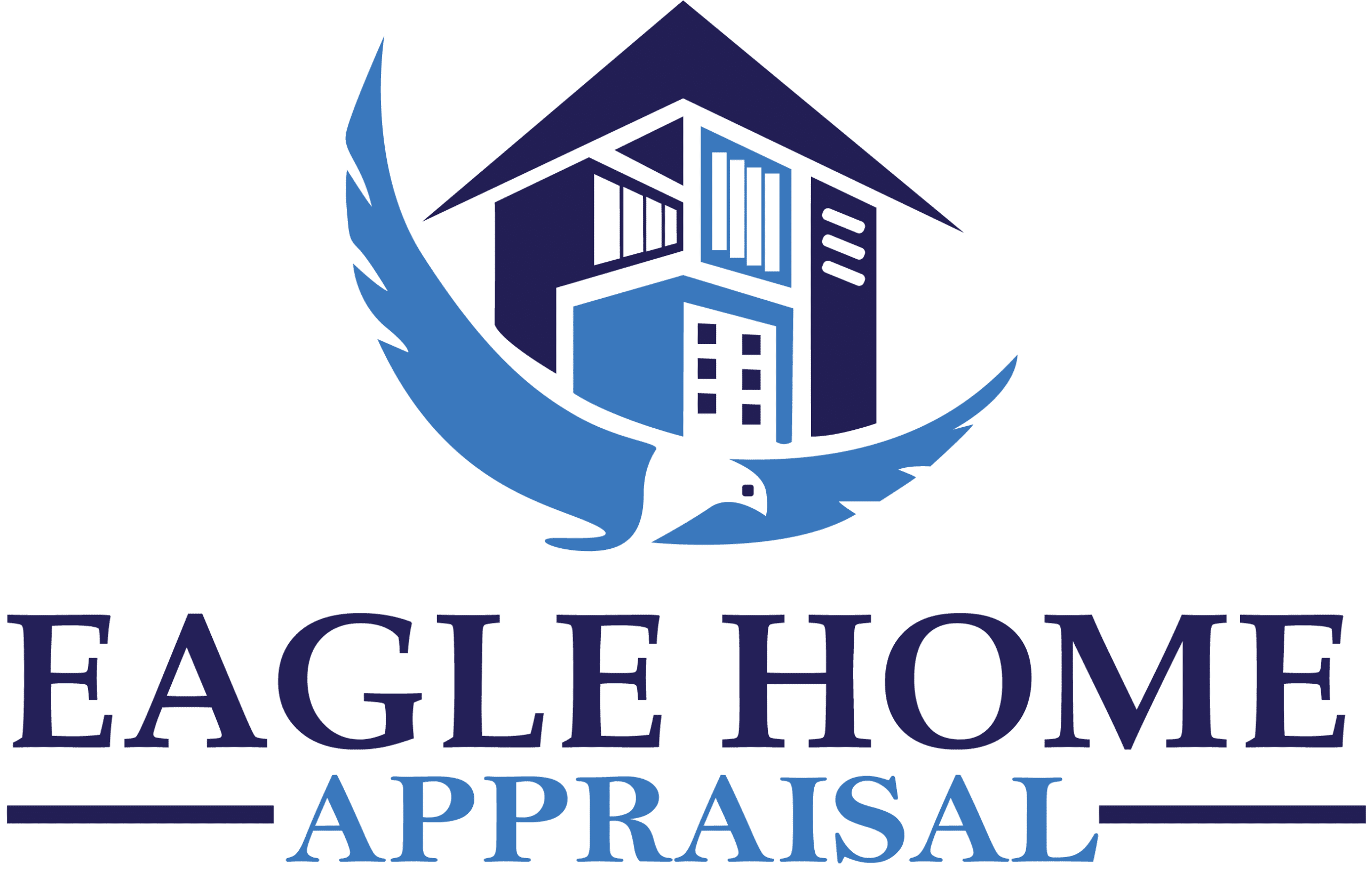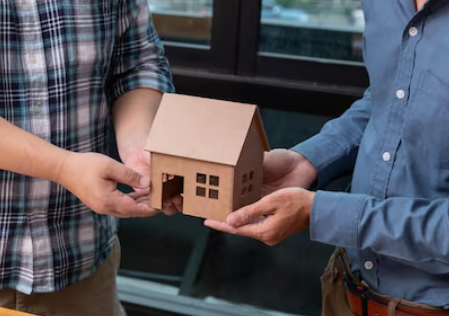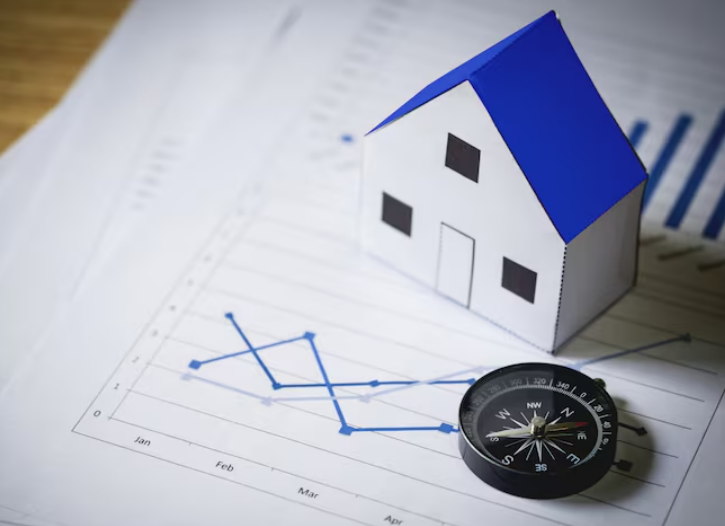What Factors Influence Appraisal Value In Gilbert, AZ Neighborhoods?
 Gilbert, Arizona, is no longer the small agricultural town it once was. Over the past few decades, it has blossomed into one of the most vibrant, desirable, and sought-after communities in the Phoenix metropolitan area. Stunning master-planned neighborhoods, top-rated schools, and a family-oriented atmosphere have propelled Gilbert into the spotlight as one of the best places to live in Arizona—and even in the U.S., making it a prime location for those seeking the best real estate appraisal in Gilbert to understand its true property value.
Gilbert, Arizona, is no longer the small agricultural town it once was. Over the past few decades, it has blossomed into one of the most vibrant, desirable, and sought-after communities in the Phoenix metropolitan area. Stunning master-planned neighborhoods, top-rated schools, and a family-oriented atmosphere have propelled Gilbert into the spotlight as one of the best places to live in Arizona—and even in the U.S., making it a prime location for those seeking the best real estate appraisal in Gilbert to understand its true property value.
When it comes to buying, selling, or refinancing property in Gilbert, the home appraisal process is crucial. This valuation isn’t just a number—it can determine if your sale goes through, whether you get the loan terms you want, or how much equity you can access. But many people are uncertain about what actually goes into determining that number.
Appraisers consider a wide array of factors when calculating the value of a property. These are not simple guesses but are based on market analytics, comparable sales, neighborhood insights, and a host of external influences. For Gilbert homes, certain factors consistently play an outsized role in shaping value—from the local real estate market climate and neighborhood amenities to the condition of the home and even future development projects in the area.
If you’re seeking to understand what boosts or diminishes your property’s appraisal value, you need to look at the complete picture. The team at Eagle Home Appraisal Gilbert specializes in understanding these nuances. With deep experience in Gilbert’s local market, they know exactly how each element contributes to the appraisal process.
In this guide, we break down the ten most influential factors that impact home appraisal values in Gilbert neighborhoods as of 2025. Each section not only explains the factor itself but also details its measurable effects and offers insight into how homeowners or prospective buyers can use this knowledge to their advantage.
Local Real Estate Market Trends
The very foundation of an appraisal rests on the real estate market’s conditions. Gilbert’s market trends in 2025 reflect a city that continues to thrive despite fluctuating national housing conditions. Appraisers rely heavily on objective local data like recent sales (“comparables”), active listings, and market activity to determine where your home fits in the price spectrum.
1. Supply and Demand Dynamics: In Gilbert, housing supply has historically been tight—one reason why prices have trended upward. While we saw a 12.4% increase in available listings from May 2024 to May 2025, this hasn’t flooded the market; demand is still driven by in-migration from other states, corporate relocations, and a steady stream of first-time homebuyers seeking Gilbert’s quality of life. Appraisers take current inventory levels into account because they influence bidding activity and time-on-market.
2. Sales Price Trends: Median home prices in Gilbert have hovered around $615,000–$619,000 in mid-2025. Luxury segments—for example, in exclusive areas like Val Vista Lakes—often sell above $1 million. Appraisers watch not just the median but also price per square foot trends, which have stayed consistent at around $270–$285 per sq. ft.
3. Interest Rate Influence: Mortgage interest rates between 6%–6.5% have balanced demand; while they’ve slowed the breakneck growth of prices seen in 2021–2022, they haven’t triggered a drop. Buyers still see Gilbert as a long-term investment, and appraisers note stable or appreciating conditions as supportive of higher valuations.
4. Market Momentum: Appraisers also analyze momentum indicators such as the number of offers per listing and average days on market (DOM). In 2025, many homes still sell within 3–4 weeks, demonstrating strong absorptive capacity in the market.
In short, appraisers in Gilbert don’t value homes in a vacuum—they tie your property’s value directly to the pulse of current market conditions, incorporating both statistical trends and qualitative momentum analysis.
Location Within Gilbert
Appraisers often say, “Location is the one thing you can’t change about a home,” and in Gilbert, location plays a huge role in determining value. Even within the same city, property prices can vary dramatically depending on the neighborhood, proximity to certain destinations, and the overall accessibility of the area.
Neighborhood Prestige: Communities like Val Vista Lakes, Agritopia, Power Ranch, and Seville Golf & Country Club are examples of Gilbert neighborhoods where demand is consistently high. These areas offer unique lifestyle perks—private lakes, walkable streets, golf courses, or farm-to-table dining experiences—that drive values upward.
Proximity to Economic Centers: Gilbert homeowners living close to major employment hubs or enjoying short commutes via the Loop 202 Santan Freeway often see higher appraisals. Reduced commute times are a selling point for professionals, making nearby homes more competitive.
Quality-of-Life Features: Location impacts perception. Properties adjacent to well-maintained parks, bike paths, and open green belts—common in Gilbert—typically garner higher values. Conversely, homes near industrial areas, high-traffic roads, or noise sources like rail lines may see negative adjustments.
Access to Shopping and Entertainment: Locations near SanTan Village Mall, Gilbert’s Heritage District, or vibrant mixed-use developments appeal to buyers seeking convenience. Being able to walk or take a short drive to restaurants, coffee shops, and boutique stores adds measurable value.
School Zoning Impact: Because school quality is so tightly tied to property values, location within certain district boundaries is critical. Even a few blocks difference can impact appraisal value by tens of thousands of dollars.
In Gilbert, location is a combination of accessibility, neighborhood reputation, and immediate surroundings. Appraisers weigh all these factors when benchmarking comparable sales, which is why two nearly identical homes can have significantly different values depending on where they sit.
Neighborhood Features and Amenities
Beyond the property line, neighborhood features heavily influence appraisal value. Gilbert is renowned for its master-planned communities, many of which boast premium amenities that elevate home desirability, a key factor in securing the real estate appraisal possible.
Community Recreational Facilities: Many neighborhoods feature swimming pools, splash pads, fitness centers, and sports courts. For example, Seville offers a private golf course and country club experience, while Power Ranch includes fishing lakes, trails, and sports fields—perks that attract families and active adults. Properties within these communities often see appraisal adjustments upward to reflect higher demand.
Green Space Integration: Homes located adjacent to or within walking distance of parks like Freestone Park or Discovery Park benefit from health, lifestyle, and visual appeal. Studies show such proximity can increase value by up to 20% compared to similar homes farther away.
Security and Exclusivity: Gated communities offer controlled access and are perceived as safer, which can translate into higher values. Appraisers take “security infrastructure” into account, particularly for luxury properties.
Retail and Dining Nearness: The vibrancy of Gilbert’s Heritage District, with its restaurants, breweries, and event venues, adds significant lifestyle appeal and can contribute to increased appraisal values for homes within a short distance.
HOA Upkeep of Common Areas: Well-maintained landscaping, clean streets, and actively managed recreational spaces elevate the entire neighborhood’s look, which appraisers consider when making value comparisons.
An appraiser may not assign a fixed “amenity premium” across the board but will instead note these characteristics when selecting and adjusting comparable properties, ensuring they reflect actual market willingness to pay for neighborhood perks.
Schools and Education Reputation
In Gilbert, the significance of school districts in determining property values cannot be overstated. Families often decide where to purchase based on access to top-rated schools, and appraisers factor this demand into their valuations.
School Ratings: Gilbert Public Schools and Higley Unified School District regularly earn A-ratings from the Arizona Department of Education. Homes within these zones benefit from strong buyer interest, pushing prices higher.
Performance Metrics: Standardized test scores, graduation rates, and college readiness indicators help shape the perception of quality. Appraisers may reference school ranking datasets when evaluating buyer expectations in specific districts.
Proximity to Schools: Drive or walk time matters. Homes within a short commute or walking distance to reputable schools often command higher prices.
Private & Charter Options: Gilbert’s respected charter schools—like Gilbert Classical Academy—and private schools also influence demand for nearby housing. Even buyers without children recognize that strong school reputations safeguard resale value.
Future Education Investments: Planned new school construction or expansions are often viewed positively, as they indicate growth and ongoing investment in the area.
Appraisers integrate this factor by carefully matching comparable sales from similar school boundaries, ensuring accurate reflection of buyer behavior.
Homeowners Association (HOA) Influence
Homeowners Associations (HOAs) are prominent in many Gilbert neighborhoods and wield substantial influence over property values—both in perception and reality. For appraisers, the presence, reputation, and operational effectiveness of an HOA can tip the scale on a valuation.
Amenities Provided: HOAs commonly offer shared amenities such as pools, fitness centers, playgrounds, clubhouses, and organized community events. This collective investment typically translates to a higher base value for every property in the development. For example, Power Ranch and Val Vista Lakes boast amenities beyond the basics, including fishing lakes, sports courts, and private clubhouses, which drive desirability and market value.
Aesthetic Standards and Enforcement: Strict guidelines regarding landscaping, exterior paint colors, fence styles, and even holiday decorations keep neighborhoods visually consistent and well-maintained. Appraisers recognize that enforced standards can uphold the overall look, preventing “outlier” homes from dragging down the value of the neighborhood.
HOA Fees and Management: The fee structure matters. Reasonable, transparent fees correlated with actual amenity benefits add value. However, if fees are disproportionately high or there are complaints about poor management, deferred maintenance, or financial mismanagement, appraisers may take a conservative approach, noting that the market may discount future prices.
Rules and Restrictions: HOAs govern more than just appearances—they regulate parking, noise, rental rules, and pet policies. While some buyers find these constraints undesirable, appraisers generally find a net positive effect on value, particularly where the rules support community harmony and property condition.
HOA Reserves: The financial health of an HOA impacts long-term property upkeep. Appraisers will often review the HOA’s balance sheet and reserve studies. Sufficient reserves ensure amenities are maintained and major repairs are handled without sudden spikes in fees or surprise assessments.
In summary, a well-run HOA tends to uphold and increase value by protecting neighborhood integrity and offering lifestyle perks. Appraisers scrutinize HOA documentation and compare homes in managed communities against similar homes outside HOAs, adjusting values accordingly.
Home Size and Usable Space
Square footage and livable space are fundamental determinants in home appraisals, but nuanced factors in Gilbert set them apart. Appraisers analyze a home’s footprint, functional layout, and flexibility to meet modern lifestyle needs.
Total Square Footage: The larger the home, the greater its value—generally speaking. Appraisers measure finished, heated and cooled areas rather than including garages or unfinished basements. In Gilbert, the average home falls between 2,000–3,000sq. ft., but properties in luxury communities may exceed 5,000sq. ft.
Bedroom and Bathroom Count: The number of bedrooms and bathrooms aligns with buyer demand. In neighborhoods dominated by families, three to five bedrooms and ample bathrooms are usually valued higher. Secondary master suites, guest quarters, and private office space command additional premiums, reflecting shifting work-from-home trends.
Lot Size and Usability: Larger lots typically fetch higher values, but the utility of the space matters. Wide, useable lots for outdoor entertaining, play areas, and pools add more value than lots with difficult topography or minimal privacy.
Flex Spaces and Add-ons: Modern buyers prize flexibility, so features like enclosed home offices, bonus rooms, and finished basements that can serve as gyms or media rooms are hot commodities. Gilbert’s suburban flavor means many buyers want space for hobbies, home businesses, or guest accommodations.
Architectural Design and Floor Plan: Flow and natural light matter. Open floor plans, high ceilings, and smart design contribute positively to valuations, especially where contemporary tastes dominate.
Appraisers use recent sales of homes with similar layouts as comparables, making subtle adjustments for upgrades, renovations, or functional differences. Ultimately, the value of home size in Gilbert is tied not just to raw measurements but to how the home meets current market needs.
Age, Condition, and Updates
The age and condition of a home are critical for accurate appraisals in Gilbert. Whether a newly constructed residence in a growing development or a well-preserved mid-century home in a mature neighborhood, details matter.
Year Built: Newer homes typically appraise higher due to modern building codes, energy efficiency, and buyer preference for move-in readiness. Contemporary materials and tech integrations (smart thermostats, solar panels) in new builds can also boost value.
Maintenance and Upkeep: Appraisers meticulously assess structural integrity: roof condition, exterior paint, HVAC systems, plumbing, windows, and more. Deferred maintenance such as worn roofs, outdated air conditioning, or visible settling may prompt downward adjustments.
Renovations and Updates: Kitchen remodels, updated bathrooms, new flooring, and improved curb appeal contribute significantly to value. Gilbert buyers respond well to stylish, move-in-ready homes; appraisers thus give weight to visible upgrades and documented improvements.
Energy Efficiency: With the Arizona climate in mind, energy-efficient features—insulated windows, new roofs, smart irrigation, and upgraded appliances—make homes more attractive and boost valuation.
Historical or Character Properties: Although newer often equals higher value, well-preserved older homes in neighborhoods like the Heritage District can command a premium if maintained and updated appropriately. These homes may offer craftsmanship or vintage charm that’s hard to replicate, appealing to niche buyers.
Documentation of Improvements: Keeping receipts and warranties for work done isn’t just good practice—it helps appraisers justify higher values, especially if the improvements are recent and align with market preferences.
Ultimately, appraisers tier homes within the same age bracket but adjust carefully for condition, making granular distinctions that can mean tens of thousands of dollars in final value.
Neighborhood Demographics and Growth
Demographics are a powerful, sometimes overlooked, force in setting home values. Gilbert’s population has exploded—from just under 6,000 residents in 1980 to over 275,000 today. This rapid growth influences everything from buyer demand to local infrastructure investment.
Population Growth: Homes in neighborhoods experiencing rising population (especially with younger families) typically see higher appraisal values due to increased demand. Gilbert is renowned for its family-friendly identity, driving a steady influx of new residents and expanding the buyer pool.
Income and Employment: Higher average household incomes and access to stable, well-paying jobs underpin the market. Employers like Northrop Grumman, Banner Health, and retail giants add stability, which appraisers see reflected in sustained demand and higher values.
Education Level: Higher rates of bachelor’s or advanced degrees in a neighborhood correlate with innovation, civic investment, and property appreciation. Appraisers consider aggregate statistics, as educated populations tend to support better schools and amenities.
Diversity and Lifestyle Trends: Communities that attract a mix of ages and backgrounds often experience stronger home appreciation. Gilbert’s mix of cultural events, youth sports leagues, and adult recreation leagues suggest sustainable demographic strength.
Migration Patterns: Out-of-state migration, particularly from high-cost regions like California, has bolstered prices. Appraisers monitor census and migration data and adjust forecasts to reflect the impact of new arrivals with substantial buying power.
A growing, affluent, and diverse population signals long-term stability to appraisers and lenders alike, solidifying higher valuations.
Environmental Factors and Safety
Environmental safety and neighborhood risk profiles are increasingly central to home appraisals. Buyers today are keenly aware of everything from flood zones to air quality, and appraisers must integrate these concerns.
Flood and Drainage Risk: The Salt River Valley’s arid climate means most of Gilbert is low-risk for flooding, but homes near canals or low-lying areas may be appraised with a cautionary adjustment if the property is deemed at risk.
Soil Quality and Land Stability: Certain soil types may require extra engineering for stability. Appraisers review records for foundational work and look for evidence of settling or structural repairs.
Air Quality and Pollution: Gilbert generally boasts clean air, but appraisers check for proximity to industrial or agricultural sites, noting any potential for dust or chemical concerns.
Crime Rates and Safety Profile: Neighborhood crime statistics have become easily accessible, influencing buyer sentiment. Appraisers utilize local police and FBI data to gauge the area’s safety. High-visibility policing, gated communities, and robust neighborhood watch programs boost perceived safety—and values.
Community Disaster Preparedness: Proximity to fire hydrants, emergency facilities, and well-marked evacuation routes add resilience. Appraisers review community records to assess readiness and may consider insurance rates as a market proxy for risk.
Current Environmental Projects: Ongoing public investments—such as constructing new parks, improving water quality, or launching pollution reduction initiatives—signal confidence in the neighborhood, influencing appraisals upward.
In short, environmental and safety factors provide both peace of mind and real financial benefit, solidly impacting values in Gilbert’s family-focused neighborhoods.
Future Development and Zoning
The future prospects for a neighborhood—confirmed development projects, infrastructure upgrades, or zoning changes—play a pivotal role in appraisals.
New Residential Construction: Ongoing building is a double-edged sword; while new homes can enhance value through improved amenities and rising demand, an oversupply can dampen appreciation. Appraisers track construction permits, upcoming subdivisions, and builders’ reputation.
Commercial Projects and Public Amenities: Planned retail centers, entertainment venues, or new schools boost property values as they signal investment and access to more services. For instance, expansions around SanTan Village have pushed nearby home prices upward.
Infrastructure Improvements: Major investments in roads, public transit, or utilities directly influence appraisals. Reduced commute times or easier access to downtown Gilbert add value. Appraisers research municipal plans and factor announced projects into their reports.
Rezoning and Land Use Changes: Rezoning from residential to mixed-use or planned community can increase values, but proximity to new commercial or industrial uses may trigger cautionary adjustments. Appraisers investigate city planning documents and anticipate market reactions.
Potential for Future Growth: U.S. Census forecasts and local growth plans are critical for predicting sustained appreciation. Neighborhoods with room to expand or promises of new parks, schools, or hospitals generally see value surges.
Appraisers combine present reality with reasonable projections, striking a balance between optimism and market-tested caution.
Conclusion
Gilbert, Arizona, is not just a place but a dynamic tapestry of neighborhoods, each shaped by myriad factors. When it comes to property appraisal, understanding what influences value is essential for homeowners, buyers, and investors making life’s big decisions.
This comprehensive overview—from market trends and location to schools, amenities, and future growth—demonstrates that appraisal is both a science and an art. Each factor feeds into the final value the appraiser assigns, and savvy property owners benefit from knowing exactly why their home is valued as it is and what they can do to enhance it.
Eagle Home Appraisal Gilbert knows the local market intricacies better than anyone. They recognize that each home tells a story influenced by its surroundings, its upgrades, its management, and the pulse of the wider community. With the team’s deep experience, homeowners receive a fair, accurate, and actionable assessment—one that empowers confident selling, refinancing, or purchase decisions.
Whether you’re improving your property for a future sale, searching for your next family home, or seeking to understand the market shifts in your neighborhood, knowledge of these 10 value drivers gives you the strategic advantage. From stellar school districts and vibrant amenities to demographic trends and new development, every detail matters.
Gilbert’s steady growth, strong schools, safe communities, and robust amenities have led to remarkable appreciation, but future value will always depend on how each factor converges at any given moment. For personalized, precise appraisal guidance rooted in local expertise, trust Eagle Home Appraisal Gilbert to deliver insights that go beyond the numbers—empowering you with clarity for today and confidence for tomorrow.
Next Up: Not every appraisal result feels fair. In our next post, we’ll explore “Can I Contest or Appeal an Appraisal in Gilbert if I Disagree?“ and the steps you can take to challenge the outcome effectively.
Divorce Appraisals
At Eagle Home Appraisal Gilbert, we specialize in providing expert divorce appraiser services, offering expert witness testimony when necessary.
Estate & Trust Appraisals
At Eagle Home Appraisal Gilbert, we offer a comprehensive range of professional estate appraisal services to facilitate estate and trust planning.
IRS & Tax Appraisals
At Eagle Home Appraisal Gilbert, we specialize in providing professional IRS tax appraisal services to minimize capital gains on inherited property.
Real Estate Appraisal
Eagle Home Appraisal is a group of independent fee appraisers committed to delivering competent, credible, and reliable appraisal reports.
Eagle Home Appraisal Services Near Me
Comprehensive Property Appraisals
Expert Witness Testimony
Fair Market Value Assessments
Rapid Turnaround Times
Customized Solutions
Contact Eagle Home Appraisal Today
For more information about our services, get in touch with Eagle Home Appraisal. Our team is dedicated to providing the best customer service, ensuring all your appraisal needs are met with professionalism and expertise. Contact us today to learn more about how we can assist you.
Get A Free Consultation

copyright @2025 all rights reserved | Privacy-policy





